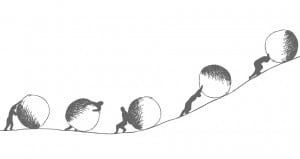In Site-Specific Performance, Pearson puts forth the idea that “the engagement of the performer at site is in essence ergonomic” (Pearson, 2010, 171). The relationship between the efficiency of the space and the performer’s objective is a significant one when examined through the medium of site-specific performance. In The Oxford Dictionary and Thesaurus, ergonomics is defined as “the study of the efficiency of persons in their working environment” (Tulloch, 2010, 499). Using ergonomics as a concept to be played with, an example of an ergonomically charged working environment would be one that maximises all aspects of performance, readiness, and proficiency while minimising threats, restrictions, and limitations. In a normal working environment this is simple; elements of the space are coordinated in a way to achieve efficiency, whereas performance in a specified site contests this notion. The site cannot be ergonomically charged as altering the site’s components refines its essence. It is already apparent that by the very nature of site-specific performance, “to move the … work is to re-place it, to make it something else” (Kaye, 2000, 2). This therefore applies to the site itself as if It is no longer in its original form the meaning of the site is distorted and by default so is the performance.
This is a concept which has revealed to me the importance of considering the gallery in its unaffected form. The site dictates performance, rather than performance dictating site. The restrictions, difficulties, and limitations must not be resisted, but rather embraced. The struggles of the conditions of the site need not serve as a handicap, as “the very engagement [with the seemingly hindering conditions] may form the substance of performance: ergonomics as performance” (Pearson, 2010, 172). Therefore, in the gallery our possibilities are widened, as that which may seem to limit us can be a performance. The struggle against the conditions, the limitations, and restraints is performative. The endeavour to create a piece within a space such as the gallery can be the basis of the work, and by one utilising that which may restrict efficiency, that which hinders us can be transformed and shaped into performance itself.

Works Cited:
Pearson, M. (2010) Site-Specific Performance. Basingstoke: Palgrave Macmillan.
Tulloch, S. (ed.) (1997) The Oxford Dictionary and Thesaurus. 3rd edition. Oxford: Oxford University Press.
Kaye, N. (2000) Site-Specific Art: Performance, Place and Documentation. Oxon: Routledge.
Recent Comments